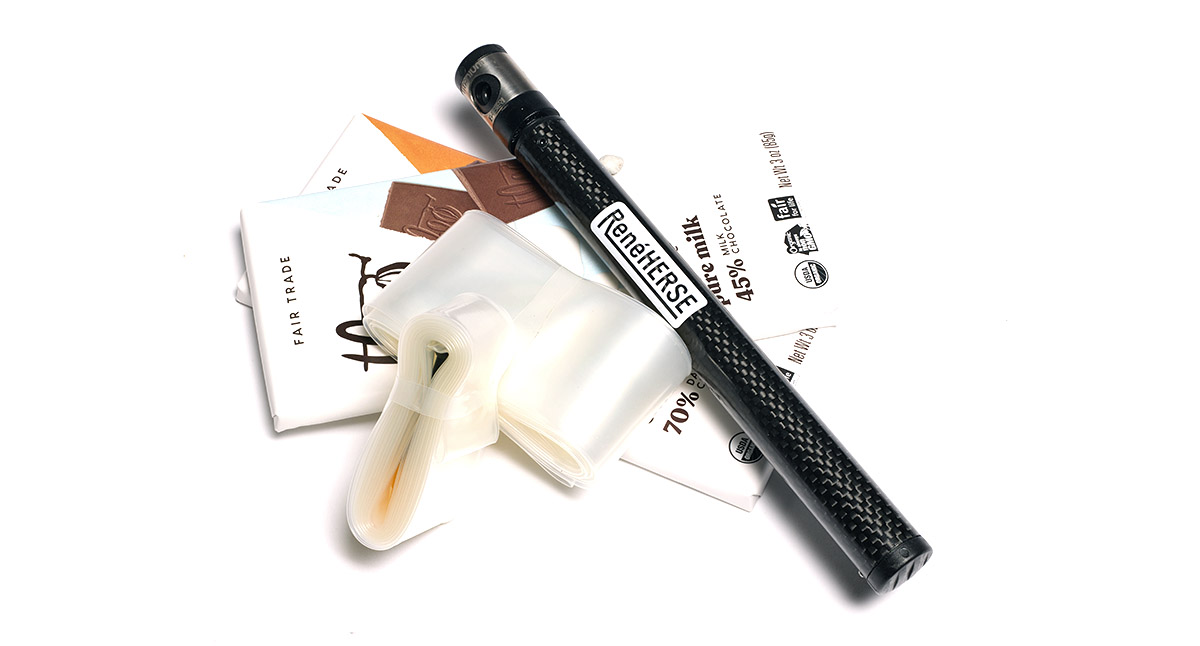TPU Tubes are here!
The new Rene Herse TPU tubes are here. It’s still surprising to me how tiny and light these inner tubes are. There is much to like about them:
- Lighter than butyl and latex tubes.
- Lighter than tubeless sealant.
- Faster than butyl tubes or tubeless.
- As fast as latex tubes.
- Better puncture- and pinch flat-resistance than butyl or latex tubes.
- As airtight as butyl tubes. Don’t leak like latex tubes.
- Pack very small—ideal as backup for tubeless tires, too.
Quantities are still limited—these are made in Germany in small batches, which takes time. More tubes are in production as we try to catch up with demand.
TPU tubes have been on the fringes of the cycling world until now, because previous models had issues with too-thin and inconsistent walls and mysterious leaks caused by plastic valve stems. To solve these issues, Rene Herse TPU tubes use slightly thicker material—adding about 3-5 g to the weight of each tube—and patented all-metal valves.
Like all Rene Herse products, we’ve tested the new TPU tubes for thousands of miles before releasing them to our customers. As with all new technology, there are many questions. Here is what you need to know about Rene Herse TPU tubes.
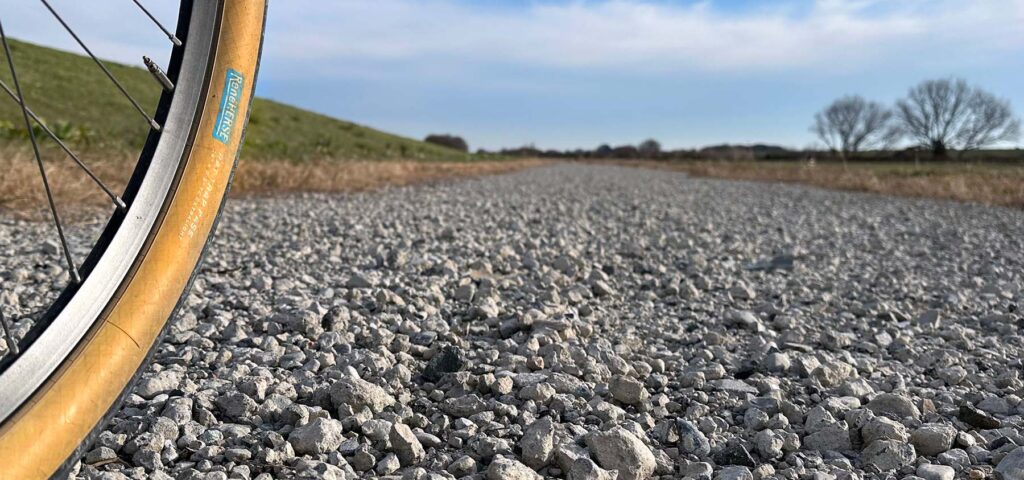
Can Rene Herse TPU tubes be used on gravel bikes?
Rene Herse TPU tubes have slightly thicker walls, so they are extra-strong. They resist pinch flats far better than butyl tubes. We’ve tested them over hundreds of miles on gravel, without any problems.
Is there a maximum pressure or maximum rider weight for Rene Herse TPU tubes?
The maximum pressure is determined by your tire and rim. Rene Herse TPU tubes themselves have no rider weight limit.
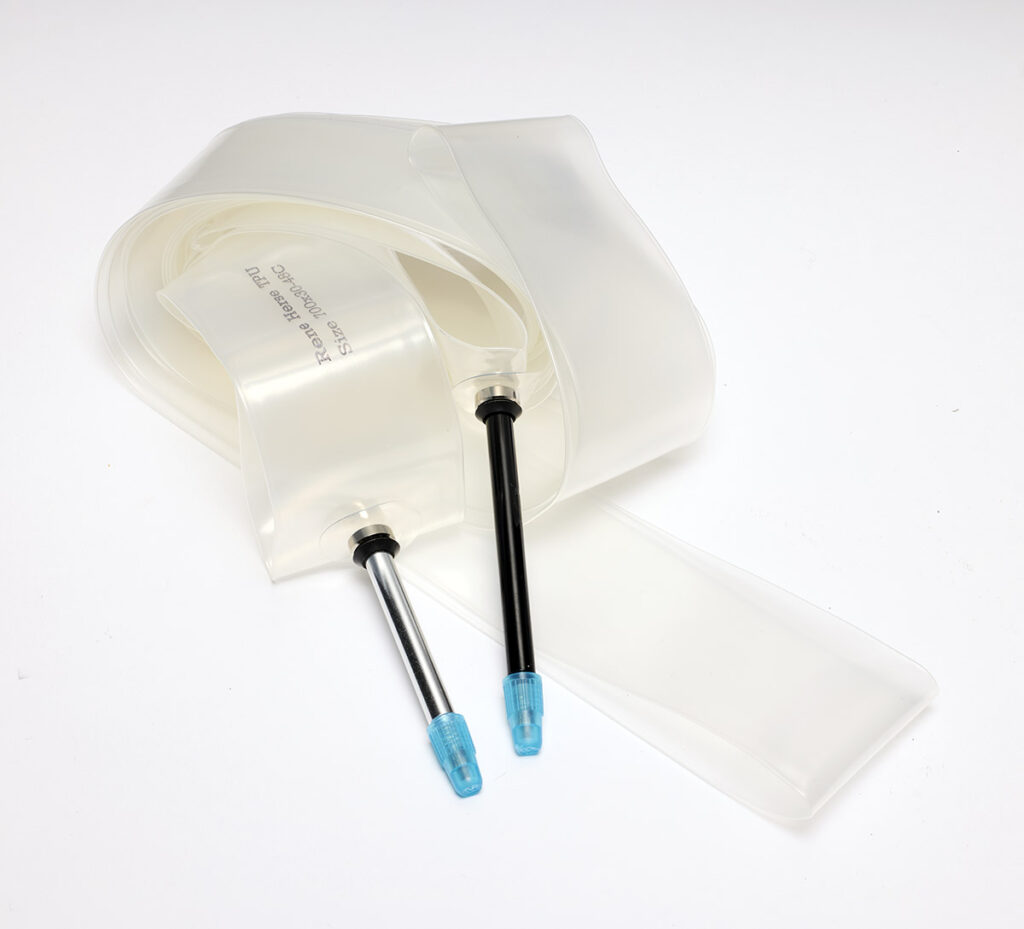
Can I run Rene Herse TPU tubes on aero wheels?
Yes. Rene Herse TPU tubes are available with 50 mm (polished) and 70 mm (black) valves.
Why don’t Rene Herse TPU tubes have valve nuts?
The smooth valve stems make it easier to inflate the tubes with slip-on pump heads. With tubes, the nuts don’t really serve a purpose—it’s actually better if the valve can realign itself if the tube isn’t installed perfectly centered.
I’ve heard that for European city bikes, the nut prevents the valve from being pulled inside the tire if you ride on stiff tires and forget to re-inflate until the tire pressure is almost zero. Obviously, that’s not something you’ll ever do on a performance bike.
Can TPU tubes be inflated with CO2 cartridges?
Inflating with CO2 cartridges is not recommended. The sudden pressure can break the tube, especially as the expanding CO2 is extremely cold, which makes the TPU material brittle. However, TPU tubes are safe to use in sub-freezing temperatures.
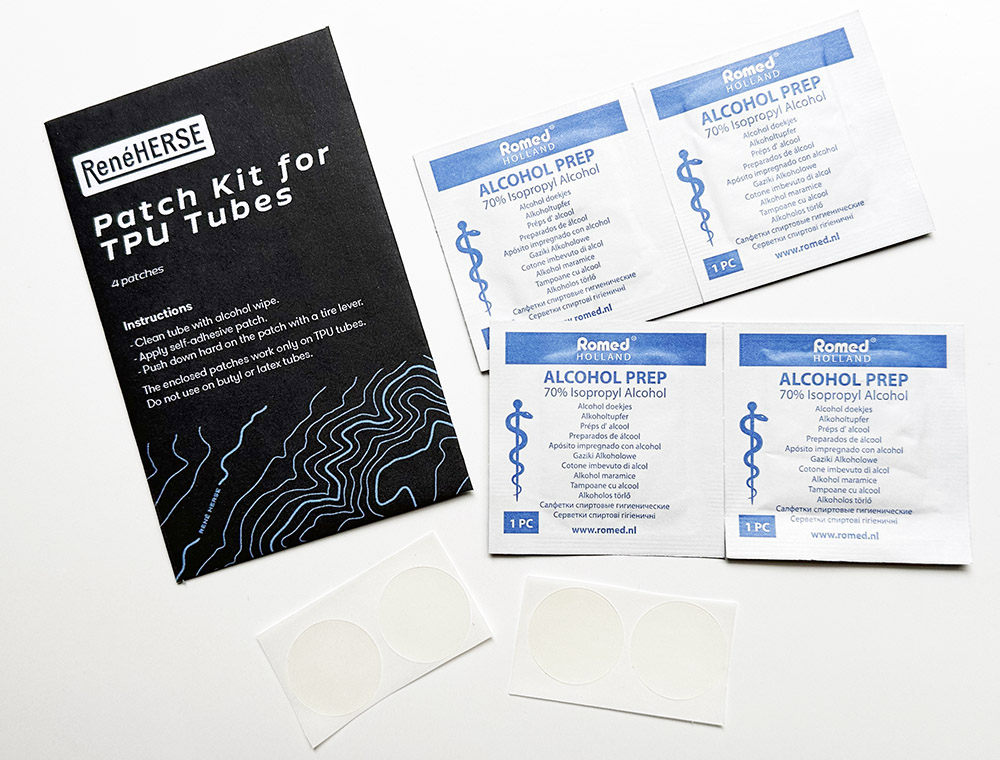
Can TPU tubes be patched?
Patching TPU tubes is simple: Wipe the tube with alcohol, then apply a self-adhesive Rene Herse patch. That’s much easier than patching a butyl tube, where you have to roughen the surface with sandpaper and deal with messy vulcanizing fluid.
Can I run tubeless sealant in TPU tubes to seal small punctures?
Latex-based sealant will not react with TPU tubes, so it will not seal punctures. There are TPU-specific sealants—we are testing them right now to make sure they work in the real world.
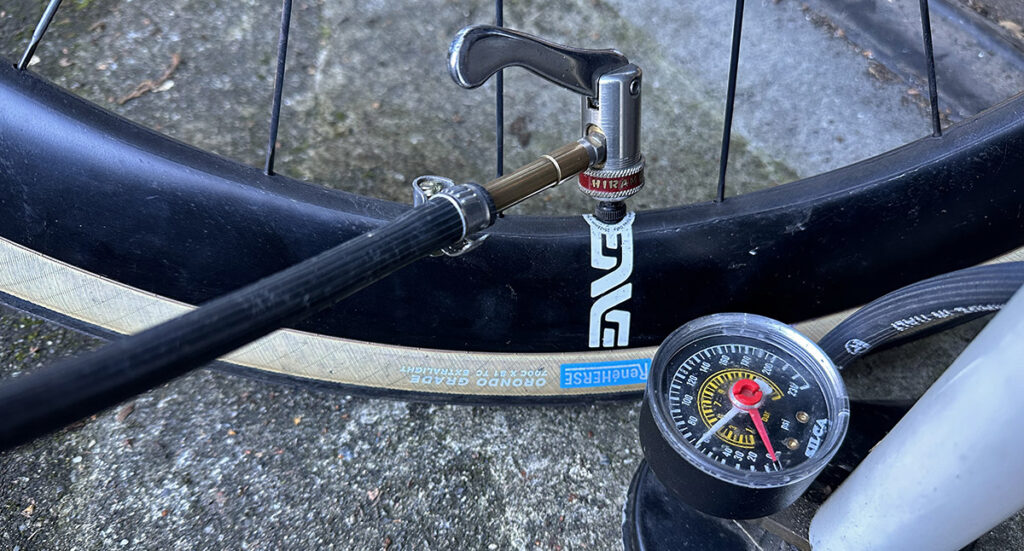
Is there anything special to consider about inflating TPU tubes?
Apart from not using CO2, there are just the normal considerations that apply to all lightweight tubes. With tubeless-ready rims, the tire often seats at relatively high pressures, so the tube is pressed firmly against the sidewall. When the tire pops into place, the sudden movement can overstretch the tube and lead to unexpected failures—with all types of tubes. The solution is to inflate the tire in 10 psi (0.7 bar) steps—especially important if you use an air compressor. Once the tire pops into place, immediately deflate the tube so it can ‘relax’ its shape, then inflate it again to the desired pressure.
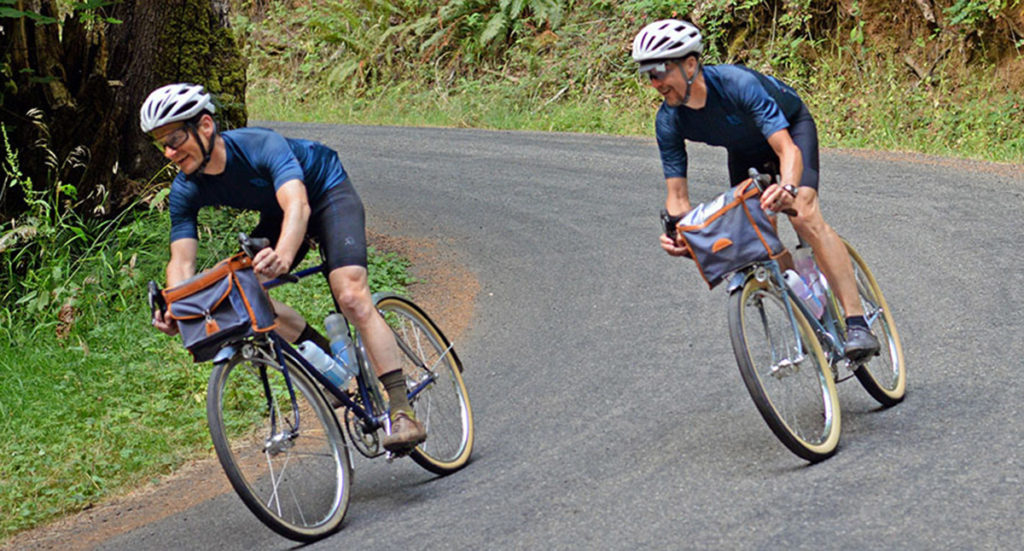
Are TPU tubes heat-resistant? Can they be used with rim brakes?
TPU stands for thermoplastic polyurethane, which means they are made by melting and extruding polyurethane. Does this mean that the heat from rim brakes can cause the material to melt again? Actually, that’s not a problem: TPU tubes have a higher melting point than butyl tubes. They are safe with rim brakes.
There are many performance claims about bike parts. How did you test the performance?
We tested Rene Herse TPU tubes against ultralight butyl tubes in carefully controlled roll-down tests, on a real road with a rider on the bike. So these test results translate directly to the real world. In the past, we’ve tested latex tubes against butyl tubes, and the performance advantage was the same for latex as for TPU tubes.
We’ve also tested tubeless setup against standard butyl tubes, and the speed was similar with both setups. That’s how we can say with confidence that TPU tubes roll as fast as latex tubes, and faster than butyl tubes or tubeless.
More information:


